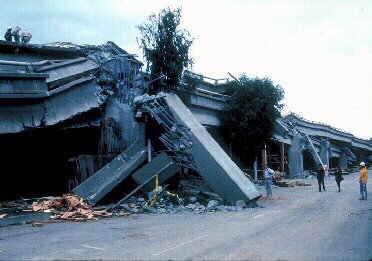NTSB: Design errors caused 2007 bridge collapse
WASHINGTON (AP) — Undersized steel reinforcing plates were cited Thursday as the chief cause of last year's deadly collapse of a highway bridge in Minneapolis. Federal investigators also said the plates were overstressed by almost 300 tons of construction material piled on the bridge.
Investigators told the National Transportation Safety Board that the collapse of the Interstate 35W bridge on Aug. 1, 2007, was unavoidable once gusset plates in the center span failed.
When that happened, it dragged other sections of the bridge and rush-hour commuters into the Mississippi River, killing 13 and injuring 145. The plates are commonly fused to intersecting beams to reinforce the connection.
Investigators focused on the U-10 gusset plates, which were designed at only half the required thickness. But they also discussed the construction materials on the center span over the Mississippi River.
"Had the gusset plates been properly sized, this bridge would still be there," said Bruce Magladry, director of the NTSB's office of highway safety.
Board members criticized Minnesota officials for allowing 287 tons of construction materials to be stockpiled on the bridge's center on the day of the collapse. During rush hour that evening, the bridge shuddered and then dropped into the river.
Investigators told the board that Minnesota did not have any policy on weight added to bridges for construction projects.
Minnesota's transportation commissioner, Tom Sorel, attended the hearing and told reporters, "We've changed our specifications to make sure that doesn't happen again." Sorel became commissioner this year.
Investigators said the half-inch thick plates were inadequate to handle traffic and other stress factors and did not meet engineering guidelines when the bridge was built in 1967.
The board's final ruling was expected Friday.
In a statement, Minnesota Gov. Tim Pawlenty, who had come in for some criticism on bridge upkeep, noted that the board ruled out corrosion or cracking, adding that the design flaw "was unrelated to subsequent inspections or maintenance of the bridge."
But board member Debbie Hersman noted that a Minnesota transportation official had noticed bowing, or bending, of the U-10 gusset years before the collapse, and the state took no action.
NTSB officials said that was because gusset plates were always assumed to be the strongest link. Hersman suggested that assumption was unfounded. Other board members agreed.
"Where does this urban myth come from that gusset plates are so strong?" she asked.
The bridge was called "fracture critical." That meant a failure of any number of structural elements would bring down the entire bridge.
Safety board investigator Jim Wildey said there is "nothing inherently dangerous" about this type of bridge, as long as each structural element is designed to withstand the expected stress loads.
In St. Paul, Minn., a group of collapse survivors gathered at a National Guard armory to watch the NTSB presentation on the Internet. Michele McLane, 41, said the hearing was "the last door to close for me."
McLane, who drove her car safely off the northern end of the span, said the experience left her emotionally traumatized. "I finally get it now," she said. "I finally understand."
During Barack Obama's campaign for the White House, he cited the bridge collapse and called for spending more on crumbling highways, bridges and tunnels.
In July, the House passed legislation authorizing an additional $1 billion next year to rebuild structurally deficient bridges on the national highway system. The bill would require states to come up with repair plans for troubled bridges.
The Senate has yet to act on the bill. If no action is taken during a lame-duck session that starts next week, lawmakers would have to start anew on the legislation in January.









